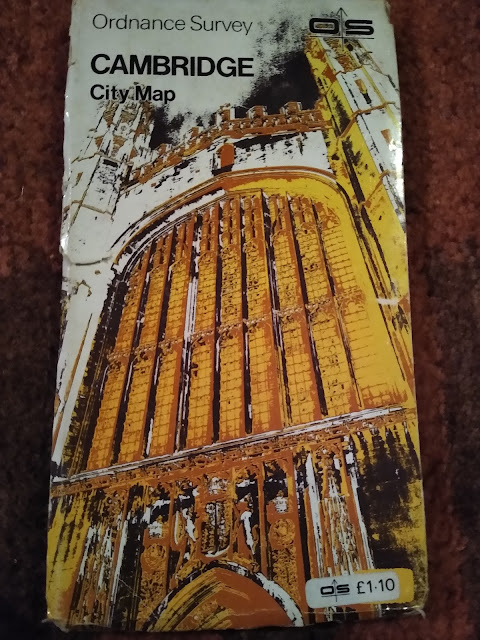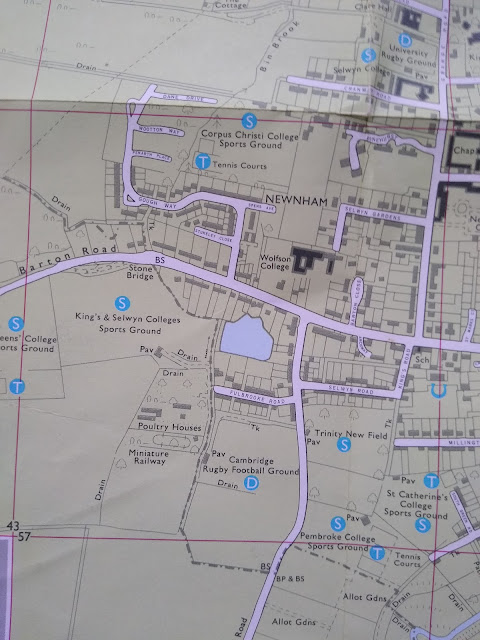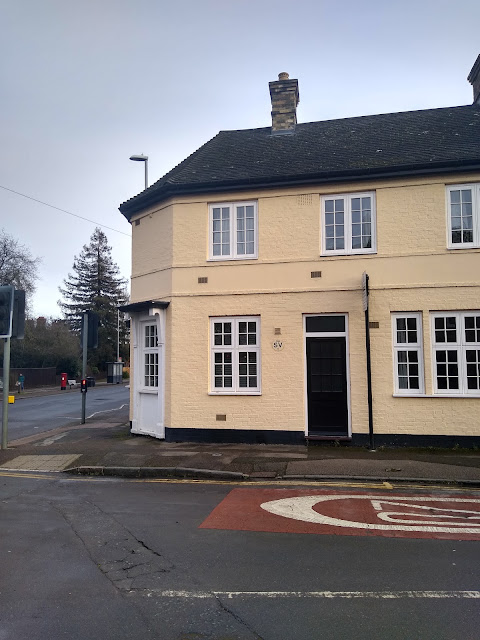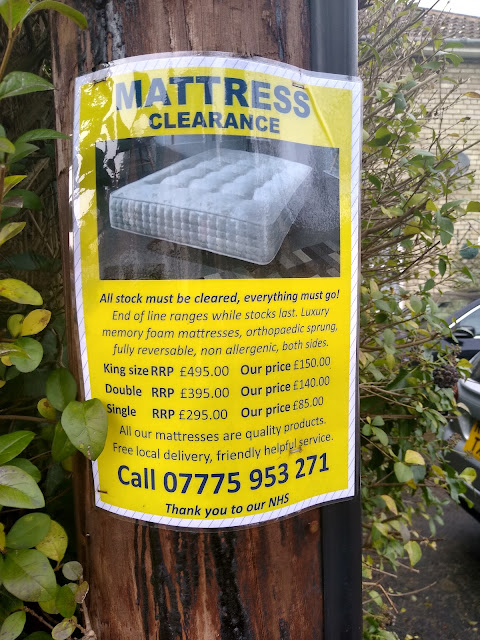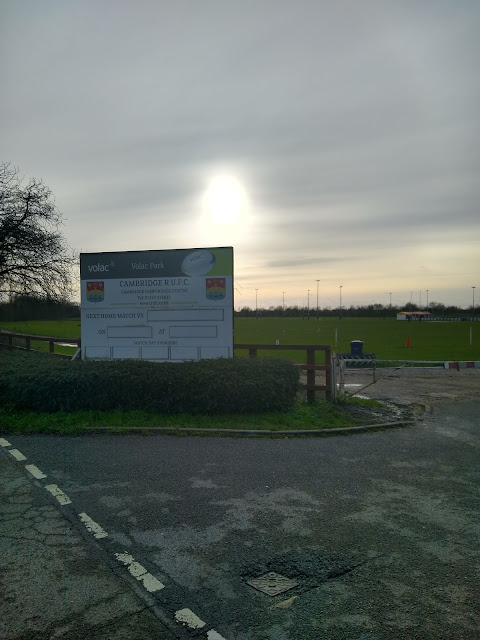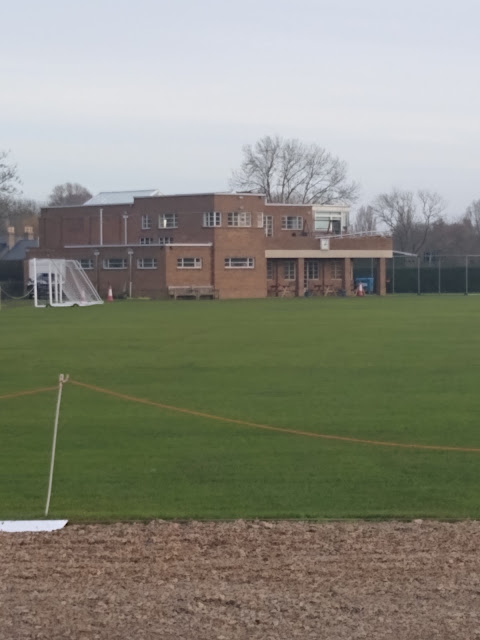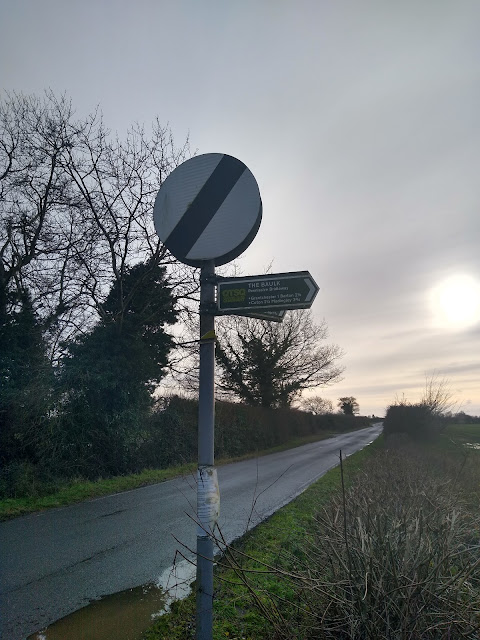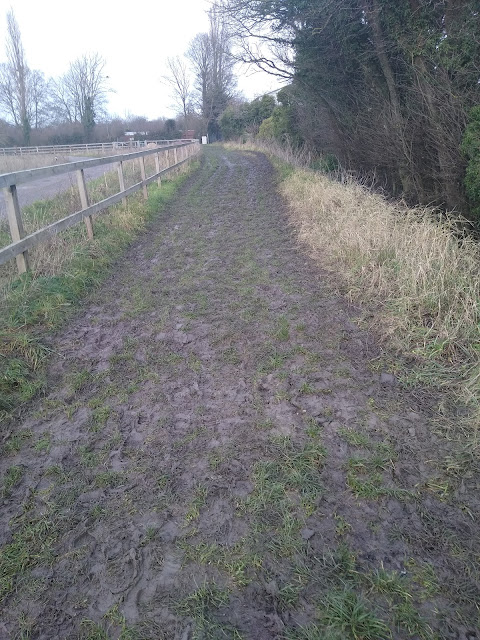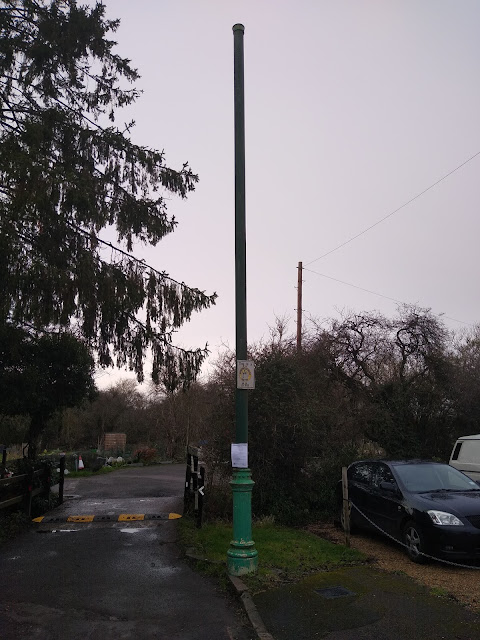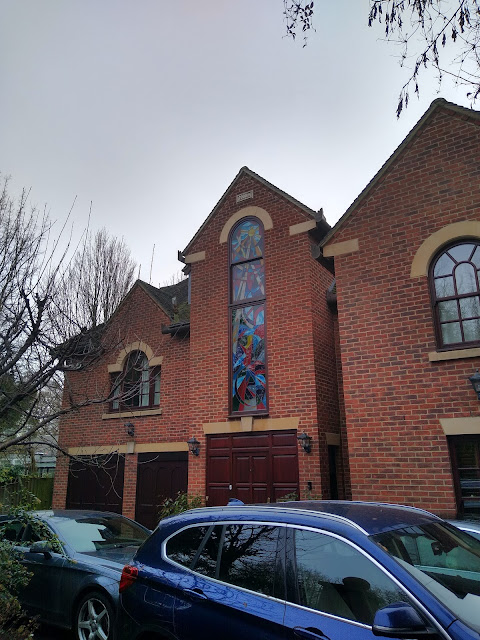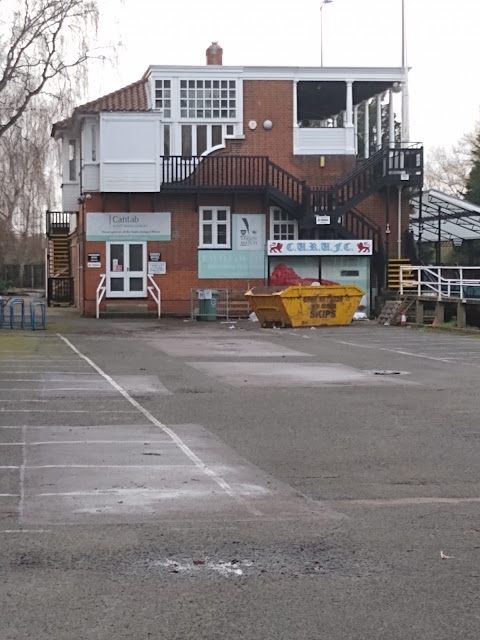The Cambridge Map and Lockdown 3
Lockdown three has brought back almost identical restrictions to the first lockdown in March last year. The message on leaving the house for exercise, similar to before, is to ‘stay local’. ‘Local’ is not clearly defined in statute but in the guidance somewhere it talks about staying within your town, village or the part of the City you live in. Any clarity this might have provided was muddied when Boris Johnson was seen cycling seven miles from Downing Street in the Olympic Park. It was not made clear if he actually cycled there or if he was driven or if it mattered either way. Stratford and Westminster are not usually considered the same part of London, but Boris was deemed not to have broken any rules. Meanwhile, in the same week two women from Ashby-De-La-Zouch were found to have breached the regulations and fined after driving 5 miles from where they lived, to go for a walk at a (possibly) local beauty spot. They had brought coffee which they were told was not allowed because it was classed as a ‘picnic’. I’m not sure if their crime was the driving to the beauty spot, the coffee or because they were judged, League of Gentlemen style, as ‘not local’ to the location.
During the weeks leading up to and through Christmas I had been feeling an increasing sense of lethargy and dis-interestedness, which was magnified by the onset of Lockdown three. In a belated start to the New Year, I decided that I needed a new method to get out and walk within the permitted boundaries of ‘local’.
A rummage in the map draw and I ‘rediscovered’ a 1980
Ordinance Survey map of Cambridge, from the same series as the Ipswich Town Map that I used as the basis for a walk a while ago. The only other map
in the series as far as I know is of Southampton, a place definitely not local and I don’t (yet)
have the map anyway. The covers of all three maps in the series feature
‘posterised’ images of local landmarks on their front covers. The Cambridge one has a closeup angular view
of Kings College chapel, apparently from the perspective of somebody laying on
the grass outside and seeing the building through the prism of 1970s special
effects from Beat Club or Top of The Pops.
The scale of the map is ideal for my purposes. Each grid square covers a large enough area to contain sufficient things of interest but one small enough to be do-able easily in an afternoon or morning. All are within reasonable walking or cycling distance from where I live, at least at the weekend when work won’t get in the way. The plan is to select a grid square using random number generators before setting out. A more local but similar idea to the Barnett’s Map project that I started around this time last year but was swiftly halted due to Covid, using the idea of a ‘catapult’ to randomly determine the vicinity of the walk.
Whilst Cambridge is technically a City, I reckon since it is
smaller than some towns, let alone any major city, anywhere within its boundary
can be considered local to me. The 1980s map will be used as a guide,
identifying points of interest that may or may not still exist within the grid
square boundary of the walk. New points of interest or possibly disinterest
that have appeared since the point in time of the map will certainly be
encountered given the level of development and change in the intervening years
in parts of the City. The walking, in order to qualify as permitted exercise
and not attract attention of the police or others, will have to involve minimal
stopping or prolonged loitering at any point of interest. How regular, in both timing and content
these walks turn out to be is not predetermined.
Preamble
The random number generator for the first walk selected map square D4. This covers an area bifurcated by Barton Road, with part the suburb of ‘Newnham Croft’ on the South side and part of the University dominated area around Grange Road to the North. The whole area is within the council ward of Newnham, the term also used for the immediate surrounding area in the local vernacular.
The suburb of Newnham Croft is one of the most well-off parts of a well-off but particularly un-equal city. I always think of it as Cambridge’s equivalent of Hampstead or Highgate. As well as being well off, it is also a conservation area. I wasn’t sure if the streets within my map square strictly as part of Newnham Croft, being a bit cut off from the main residential area located in the adjacent square, or if they were simply part of ‘Newnham’. Maybe this would become apparent.
Amble
I began at the corner of Barton Road and Kings Road outside a building that used to be the Hat and Feathers Pub until about 2010. It is not easily recognisable as a former pub, having been completely striped of any external paraphernalia hinting at its former life. I only recall visiting it once, as a teenager, when a friend living around the corner on Selwyn Road had a party. We were ordered to contribute to the swear box several times soon after our arrival. Other than that, I remember very little about the pub. Still, any pub lost to flats, even one with puritanical views on the use of language, is to be mourned and I stood for a few seconds to pay my respects
Across the street, a laminated advert for a mattress sale was attached to a telegraph pole. These are currently prolific throughout Cambridge. They seem to have superseded a previous epidemic of similar notices offering outdoor benches of the type normally found in pub gardens. Maybe these items have become excess due to a downturn in sales of mattresses to hotels and benches to pubs during Covid and there is cheap surplus stock to be had. I imagined a dodgy bloke in a lock-up full of these items, waiting for his mobile to ring after a morning stapling notices to posts around town, a low-level disaster capitalist spawned by Corona Virus.
I turned into Selwyn Road, a street I was only vaguely
familiar with from the previously mentioned party and couple of other visits to
the same friend’s house around the same time. The street was devoid of people.
There seemed to be a clear divide between sides of the road, one made up of
modest sized terraced houses but ones which were in keeping with the general
ambience found in the main bit if Newnham Croft. The houses on other side of
the road by contrast, while not exactly resembling the one depicted in the ‘22
Shit Street’ ceramic ornament Viz used to sell, were much less in keeping with a
middle-class conservation area. It more resembled part of a decent post war
council estate. A taxi was parked in one drive, and on another house the front
door window was boarded up with plywood. The front gardens were lived in, not
twee. The contrast between both sides of the street was subtle, but marked and
an indicator of a more sensible era when council housing was widespread enough even
to appear in posher parts of town.
At the end of the street, I turned into Grantchester Road. This, by no surprise, eventually takes you to the village of Grantchester, famous for the poet Rupert Brooke and less impressively, Jeffrey Archer. Rupert Brooke had a pub named after him in the village and is also associated with the tea orchard which is a big tourist draw. Archer, by contrast, is conspicuous in his absence in any tourist narrative the village uses to attract visitors. I recalled him coming to my secondary school and giving a talk where he extolled the virtue of hard work and competition. The reception he got from the assembled was polite but lukewarm. Any visitors are much more likely to associate the village with Brooke or Robson Green from the ITV drama series ‘Grantchester’ than Archer. Grantchester, the television program, is set in a fictionalised version of the village during the 1950s and partially at least filmed locally. The programme is a formula ITV drama and not of huge interest, other than to spot the difference between real and non-real local references and locations. The village was at least two map squares away from where I was at this point, possibly off the map. It would almost certainly be full of lockdown walkers and joggers, so I was glad I had not been randomly catapulted there today.
I passed the Rugby Stadium, home of the Cambridge Rugby Union Football Club and the University Rugby League club. This was a place I couldn’t ever recall seeing before, although I have cycled this route at least once. That was in the dark after a couple of pints at the Blue Ball in Grantchester, so maybe I didn’t notice it. It is mostly field after all. The ground is called Volac Park due to a sponsoring deal with Volac, a company based in Royston, Herts and who are ‘world leaders in dairy nutrition’ according to their website. Previously the club was named after Wests Renault Garage a formerly well-established local business across town on Newmarket Road, since gone to make way for the ‘Anglia House’ student flats development.
I took a left turned off Grantchester road into ‘The Baulk’ permissive byway, just in time to avoid the point where the narrow, unmarked and in places windy road reached the national speed limit. The Baulk, by contrast, had a far more agreeable 5mph limit, presumably for tractors and people using it to get to the ‘Cocks and Hens’ tennis club for which there was also a sign here. The name seemed fitting for a location in a terrible 1970s ‘sex comedy, starring Robin Askwith rather than the University imbued edgelands of the 21st century city. After I looked at the map, it made more sense. Nearby, at least in 1980, were some Poultry Houses located behind the rugby club. The Baulk, meanwhile, is a historic footpath linking Grantchester and Barton, and also according to the sign, Coton and Maddingley. A path I had previously unaware of until today.
The sign for the Baulk featured the logo for something called’ QTSQ Quarter to Six Quadrant’, which sounded like the name of a mysterious University drinking club. On return google confirmed this referred to the area of Cambridge bordered by a straight line from Maddingley Road South to Grantchester and another from the same point running East to Coton, thus resembling the hands on a clock at a quarter to six. South Cambridgeshire District Council has designated this area a ‘Major Green Infrastructure Target Area’.The name QTSQ has also been adopted by a local association who have their own vision for the area and want to preserve it. They and have managed to get South Cambridgeshire District council to consider this vision as a material planning consideration. Their other activities include an oil club (the domestic fuel type), as well as promoting walks and local pubs in the area. This corner of the Cambridge edge is one hitherto largely untouched by major development unlike most other parts. If any local area is likely to be spared to sort of development seen elsewhere, it’s here. It will be interesting to see how things pan out over the next few years in this area – or ‘Quadrant’.
The path took a 45 degree turn to follow the edge of the ‘Cocks and Hens’ Tennis club, at a point marked by a second world war pillbox. Not something I had expected to find, but I suppose this was a sort of edgeland, albeit one without the usual connotations of abandoned industry and dilapidation. This was more the edgeland of Cambridge University.
The track within the private grounds of the tennis club was dry and would have been easily walkable. The public track parallel to it, which ran alongside a brook, made me rebuke myself for coming out in footwear only really suitable for urban walking. I’d assumed I wouldn’t encounter the sort of muddy paths I’d inadvertently found myself on the day before across the saturated Stourbridge Common, but would be walking in an area where it was easy to stay on the dry land of asphalt and concrete. I was wrong! The path in front of me was something of a quagmire, but I managed to negotiate it in my unsuitable slip-on DM type boots by sticking to the relatively grassy bit near the brook, managing not to slip and fall in.
Safely on the other side, opposite the beer barrels stacked at the back of the Rugby Stadium, I noticed a gate led to a model railway. This was on the 1980 map, but somewhere I had never known existed and I had wondered if it would have disappeared. This is the home of the Cambridge Model Engineering Society who open the railway for public visits once a month (usually). Through the gate I could see what looked like a level crossing and a few other bits of railway paraphernalia but had I not known it was there, I could easily have missed it due to the prolific number of trees in the site. Further up another gate bore a notice confirming Covid-19 had curtailed public visits, in front of a muddy path that led somewhere but without the notice, again, there was no obvious sign of a model railway, with the place easily resembling a farm with chicken sheds as shown on the 1980 map.
As I approached the end of the section of path, with a small but impressive allotment site on one side and Fulbrooke Road on the other, I realised I hadn’t seen a single person along the Baulk. This place virgin territory for me, which in a city you have lived all your life Is always produces a mixture of mild euphoria and dreamlike unreality, particularly in places that are devoid of other people and out of the way of things. I felt this most keenly at the confluence of the path with Fulbrooke Road, The Allotments and the entrance to Kings College and Selwyn College Sports Ground (private property). Everything seemed to pause momentarily.
This was not just a metaphorical pause, though. I stopped to consult the map and saw two points of interest, things I’d never previously heard of or seen. ‘Stone Bridge’ was shown on the other side of the playing field where what looked like a continuation of the path met Barton Road. Before that, to the left of this path was what appeared to be a large lake, but which was not named or marked otherwise. This was located on land between houses on Fulbrooke Road and Barton Road. I considered going into the sports ground but could see no apparent pathway following the brook as shown on the map. Besides, the notice clearly stated the land was private, so regardless of the gate being wide open, I decided going in was a bad idea, path or no path. I was attempting to stick to the rules and didn’t want any unwanted attention from neighbours or the police.
Instead, I diverted down Fulbrooke Road, where also marking the confluence of paths was an impressive stinkpipe. This contributed to the sort of unchanged and just off the edge of town but not quite village atmosphere of the deserted street, which was very agreeable.
Back on Barton Road I headed towards the location of the Stone Bridge, on the 1980 map. One of the unnecessarily large houses that line the road, and at this point back onto the lake, had a large arched stained-glass window, above which a stone was engraved with ‘2000AD’. Maybe the part of the building above the garage was devoted to some sort of dystopian comic book judgement based religion, that made offerings to whatever dwelt in the lake to appease the deity.
It soon became apparent there was no access to the lake from any point on Barton Road either and I gave up hope of seeing it. On return, from what I could gather, it is on private land and indeed not accessible to the public. It is known as Bolton’s Pit after George Bolton, who used to quarry bricks there in the 19th century the quarry later becoming the lake. I did manage to view it via a video on an estate agent’s website, as part of the sales pitch for ‘The Lake House’, a new house on Barton Road with the lake at the end, or possibly in, its back garden. Apologies for the ‘estate agency-ness of the video which I have included purely for illustrative and educational purposes.
Stone Bridge was marked on the map at the point of the sign marking the city limit. It occurred to me that what I thought was a path on the map following the brook through the sports field was in fact the line of the city boundary. I could see just beyond the sign a layby which normally accommodates resting truckers and a burger van, but it was devoid of either. I crossed the road to where a brook emerged. I couldn’t work out if this was the same brook I had been walking along and if this had crossed under the road, or if this was different one. The map was vague on this and looking at the current OS map didn’t help either. There was no sign of a stone bridge either side of the road. But the emerging brook was wider, fuller and flowing much more rapidly here as it turned through a pronounced meander. From the map, I identified this as part of the Bin Brook, a watercourse I had heard of and seen on maps but which had otherwise remained off my radar previously.
A short distance along the brook I reached ‘Gough Way
Culvert’ which took the brook underground beneath the Gough Way Estate. Another
channel went off at right angles and later investigation revealed this as a
relief channel for the Bin Brook. I followed the course of the brook via a
passage into Gough Way Estate, which was another part of Cambridge I had no memory
of ever visiting or even being aware of. Most of the
houses were built between the mid-1960s and mid-1970s. Houses on the estate
suffered flooding in 1978 and again in 2001 and despite the culvert and relief
channel there are concerns that the area is still at risk from this happening
again. Today, this seemed more than possible.
I soon emerged at a small recreation ground surrounded by
houses on three sides. On the left side the Bin Brook had re-emerged and the footpath
followed its course. A handful of young people were on the rec and I soon
passed a trio of elderly(ish) women with small dogs, who said hello and didn’t appear
to regard me as suspicious. That, in my mind, validated my right to walk the
path. The path and brook separated the estate on one side and Corpus Christi
College Sports Ground on the other, the latter hidden behind trees but clear on
the 1980 map.
I noticed the path featured lights in the floor which are sometimes found on cycle paths. The path seemed a bit narrow to accommodate cycling, but a sign advising people to slow down in advance of a sharp blind bend suggested the route was used to cycle into town. As I took the bend, I saw no cyclists. My attention was momentarily diverted into the field which suddenly appeared on the estate side of the path as the houses ran out. It looked at first glance like a normal agricultural field but there were two people standing in the middle having a chat among whatever was growing. They didn’t strike me as farmers and I wondered if the field was connected with the West Cambridge site nearby which is an amalgam of University linked science based institutions. Was the field was used for conventional agriculture or some sort of experimentation? Given the strangeness of the last year and the weird times we are living in, the second option felt like something that now would probably be regarded as more normal and run of the mill than perhaps it ought to be . Of course, they could have quietly been plotting to sell the land for housing, although being in the Quarter to Six Quadrant this would have been a bit optimistic on their part.
I only encountered one other person along the remaining
section of the path. A jogger, who showed no sign of intending to deviate from a straight trajectory in the middle of the narrow path, presented an awkward social distancing challenge. I had to force myself into a hedge in order to try and move myself two metres away. While mildly irritating, the narrow path was never going to allow much leeway when meeting anybody coming the other way. I reflected that while not an ideal place to go for a run, anybody living 'local' who did not have access to the vast green spaces of the various University sports fields in the vicinity, had little choice but to make do with the limited space available in between them.
I emerged into Cranmere Road which I realised was out of the
map square. But there had been no other route given that much of the land this
side of Barton Road in square D4 was inaccessible University or College land. This
road led to Grange Road where I headed back into D4. Grange Road was at the
Eastern edge of the map square. Along it I passed a mixture of college and
University buildings, mostly residential. Nothing immediately struck me and the
lack of sideroads to explore and the beginning of aching legs indicated it was
time to depart square D4. I decided to turn back and exit the grid square to
the North where just beyond was the Cambridge University Rugby Union Club. I
briefly stood outside to look at and pay homage to the Red Lion statue, which was
unceremoniously half hidden behind a skip. After bidding farewell to the former Town Centre icon I walked home.
